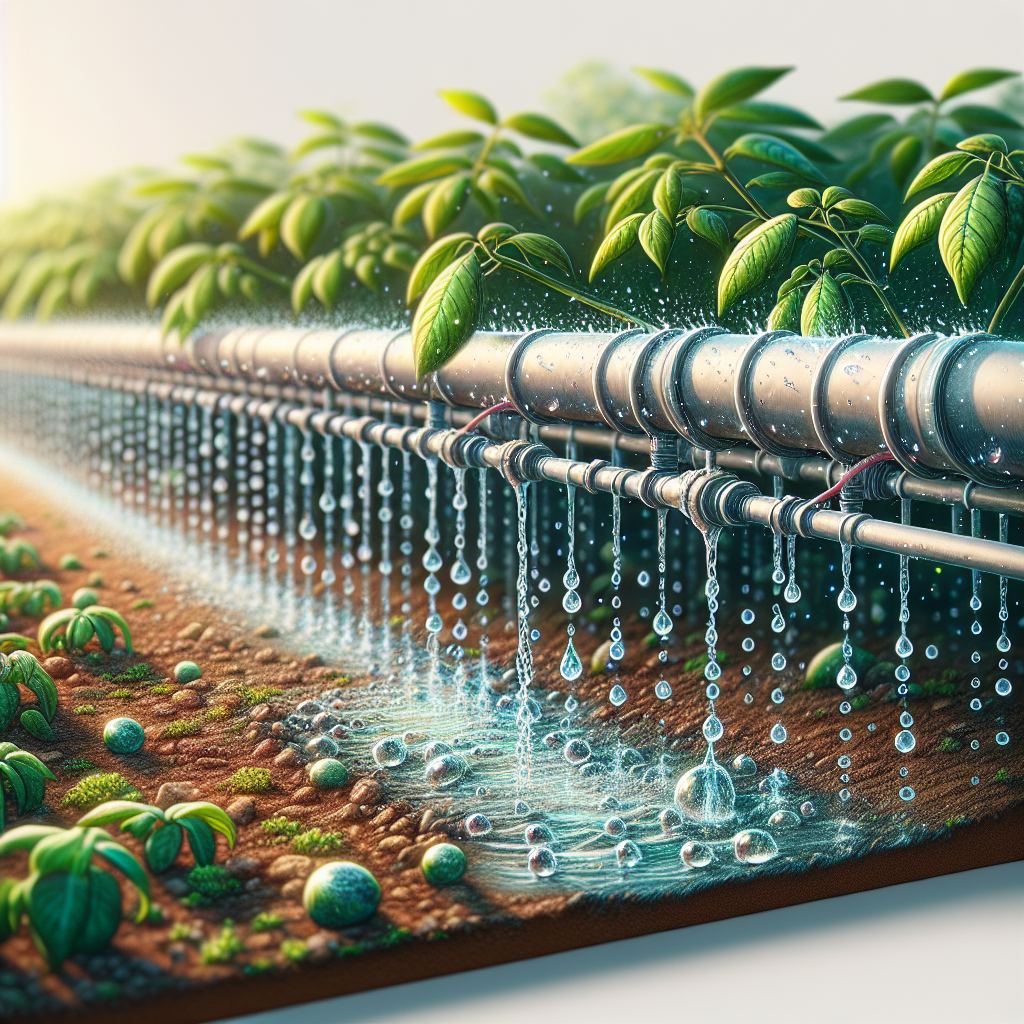Conserving Water with Innovative Slow Drip Irrigation Methods
Water is one of the most precious resources on our planet, and with increasing concerns about water scarcity and the impact of climate change on our water supply, it is more important than ever to find ways to conserve this vital resource. One area where water conservation is particularly crucial is in agriculture, where vast amounts of water are used for irrigation.
Traditional irrigation methods, such as flood irrigation and sprinkler systems, can be highly inefficient, leading to significant water wastage. In recent years, there has been a growing interest in alternative irrigation methods that are more sustainable and water-efficient. One such method that has gained popularity is slow drip irrigation.
Slow drip irrigation involves delivering small amounts of water directly to the roots of plants through a series of tubes or pipes. This method ensures that water is delivered precisely where it is needed, minimizing runoff and evaporation. By reducing water waste, slow drip irrigation can help farmers save valuable resources while also improving crop yields.
There are several innovative techniques and technologies that can be used to implement slow drip irrigation effectively. One such technique is known as subsurface drip irrigation (SDI), which involves burying drip lines beneath the soil surface. This method helps minimize evaporation losses and reduces weed growth, resulting in significant water savings.
Another innovative approach to slow drip irrigation is the use of smart irrigation systems that use sensors and data analytics to optimize water usage. These systems can monitor soil moisture levels, weather conditions, and plant health in real-time, allowing farmers to make informed decisions about when and how much to irrigate their crops.
Furthermore, advances in materials science have led to the development of more durable and efficient drip lines that can withstand harsh environmental conditions and last for many years. These high-quality materials help reduce maintenance costs and ensure long-term sustainability of slow drip irrigation systems.
In addition to conserving water, slow drip irrigation offers several other benefits for farmers. By delivering water directly to the roots of plants, this method helps promote healthier root growth and reduces the risk of diseases caused by overwatering. Furthermore, slow drip irrigation can improve soil structure and fertility by encouraging deeper root penetration and minimizing soil compaction.
The adoption of slow drip irrigation can also help farmers reduce their energy consumption by using less electricity or fuel for pumping water. This not only lowers operating costs but also reduces carbon emissions associated with agriculture.
Despite these advantages, there are still some challenges associated with implementing slow drip irrigation on a large scale. One common concern is the upfront cost of installing a new system, which can be prohibitive for small-scale farmers or those operating on tight budgets. However, government subsidies and financing options are available in many regions to help offset these initial costs and encourage the adoption of sustainable irrigation practices.
Another challenge is ensuring proper maintenance and monitoring of slow drip irrigation systems to prevent clogging or leaks that can compromise their effectiveness. Farmers must regularly inspect their equipment, repair any damages promptly, and recalibrate their systems as needed to ensure optimal performance.
Overall, slow drip irrigation represents a promising solution for conserving water in agriculture while improving crop productivity and sustainability. By harnessing innovative techniques and technologies, farmers can maximize their yield while minimizing their environmental footprint.
In conclusion,
slow drip irrigation offers a sustainable alternative to traditional methods
of watering crops by delivering precise amounts
of water directly where it’s needed most – at the roots.
With advancements in materials science
and data analytics,
this approach promises significant
water savings
and improved soil health.
By embracing these innovative techniques,
farmers can play a crucial role
in safeguarding our precious
water resources
for future generations.
It’s time we prioritize sustainability
and adopt eco-friendly solutions like slow-drip
irrigation
to ensure a thriving agricultural sector
and healthier planet for all.













